Off the Mat and Into the World
By ROB SIDON
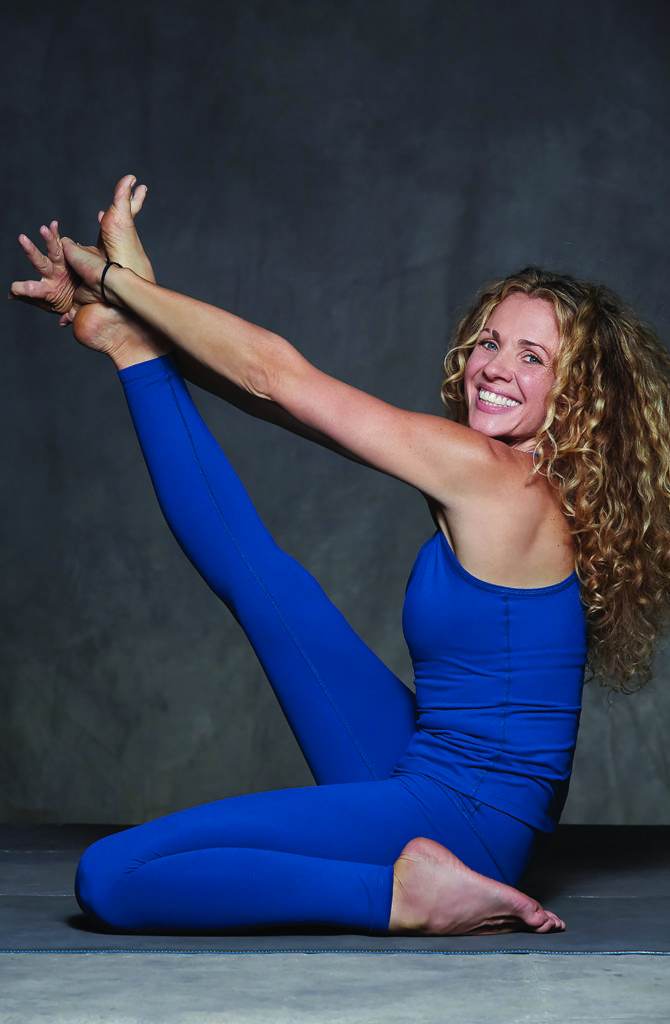
Seane Corn grew up borderline atheist in New Jersey and moved to New York City at 17 in the early eighties, where she received a story-filled education by working at multiple nightclubs and with David Life at Life Café, where drug overdoses were commonplace. In the early nineties she moved to Los Angeles and rode the ascendant wave of yoga popularity that quickly led her to become an international star.
Ten years ago, she and cofounders Hala Khouri and Suzanne Sterling launched Off the Mat Into the World, a successful nonprofit aimed at bridging the gap between the yoga community and social service. We spoke with Seane about the fascinating evolution of her path and about her optimism for the love-based grassroots yoga movement to advance the practice as a healing art and to be a catalyst for progressive change.
Common Ground: You were born in 1966. What was it like growing up in Passaic County in New Jersey?
Seane Corn: I grew up a half hour outside the Lincoln Tunnel in a strong, supportive community of working people with whom I’m still close today. It was the kind of environment where the community stepped up and took care of each other. It was a good upbringing, just with a bit of a thicker accent. [Laughs] My father owned a Styrofoam factory. It was his father’s before that. I grew up around chemicals. My mom was a homemaker and then worked in upscale boutiques.
What was your religious background and how did it affect you?
My father was half Jewish and half Catholic. My mother came from a religious Jewish background but my parents raised us with no religion whatsoever—no talk of God. We were agnostic, perhaps even borderline atheist. Because my father was not fully Jewish they were discouraged from getting married. My mother actually got pregnant so they would have to get married. My [maternal] grandfather offered my father a Cadillac if he could convince my mother to abort. My parents, who were in love, felt that if religion was trying to keep them separated then they didn’t want to raise their children with dogma.
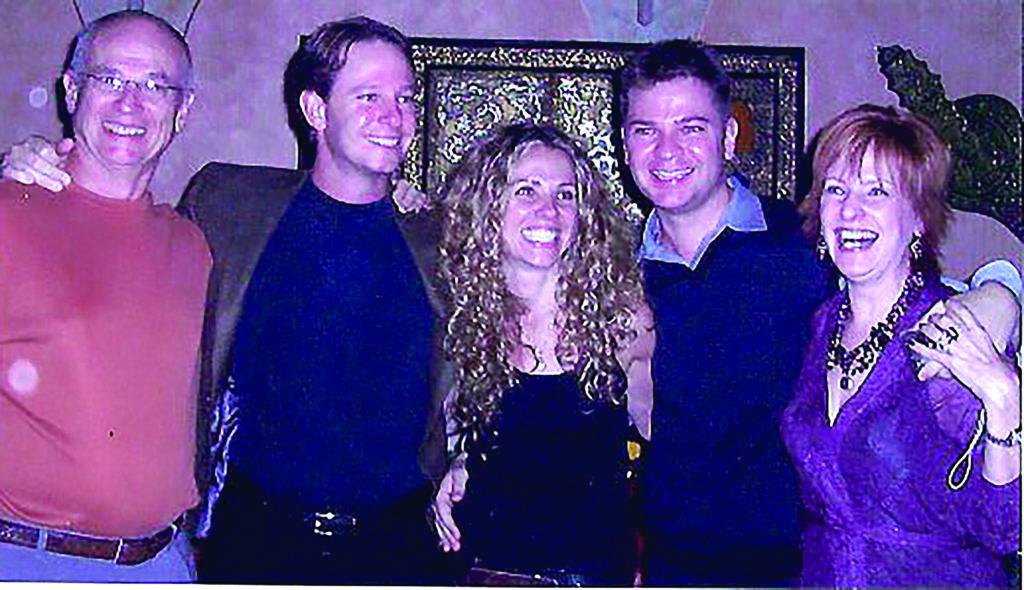
You had to find spirituality by yourself?
Even though we weren’t raised with religion I learned from my environment and through some weird osmosis that God was punishing—that you had to look over your shoulder and that if you didn’t, God was going to get you. I developed a pretty hardy fear of a punishing god and became deeply superstitious, which is why I wanted to reject it 100% and claim atheism.
You were a dedicated student in high school with Ivy League aspirations, right?
[Pause] I hope you’re kidding. [Both laughing]
No, I was a horrible student. I got 758 on my SATs and couldn’t get into college if I wanted. I was into athletics, having a life, and found out later that I wasn’t a linear thinker. My mind worked differently—I was a right-brained, emotional, creative learner where imagery was effective. At 17 when I graduated, I wasn’t going to college but knew that if I stayed in Pompton Lakes I would follow the path of my friends and probably end up working at my father’s factory and get married and have kids. I didn’t want that so I needed to leave. I moved to New York.
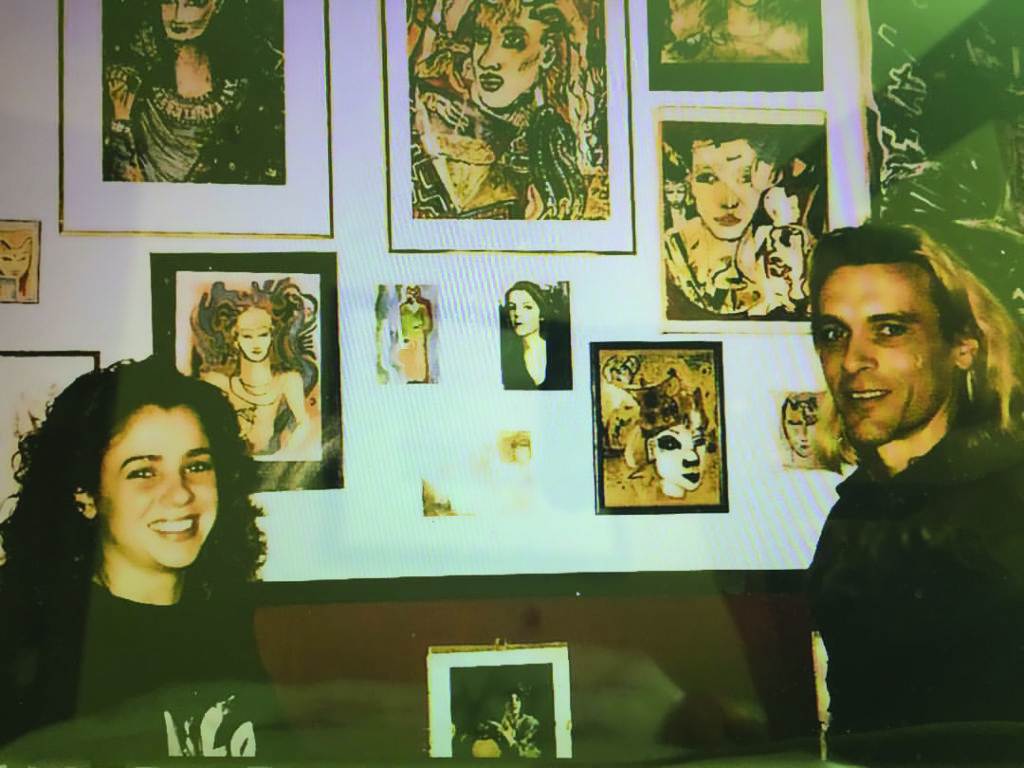
You never went to college but received your core education at Life Café. Can you describe David Life and the Lower East Side scene in the early eighties?
I was fresh off the 197 express bus from Jersey, and the East Village was amazing—dangerous and creative and diverse. I loved it more than anything. I felt both completely at home and out of place. David was grounded, quiet, responsible, and caring to the community—the only adult figure in New York City whom I trusted completely. The restaurant itself had David’s artwork all over the walls and in one section there were a lot of neighborhood people—homeless people who would hang out all day and play chess or checkers. If they didn’t have money for food, David would offer a bowl of rice and beans and tahini sauce if they were hungry. But if you were a waiter in that section you’d make no money, which was a pain in the ass. It was important for David that people had a place to come no matter what. It was eclectic, with actors, artists, politicians. I waited on Allen Ginsburg and William Burroughs for years not knowing who they were. They came once a week, sitting across from each other arguing all day long, nursing only a cup of coffee.
A lot of drugs at the Café?
Oh yeah. On my very first day of work my very first customer was a woman who sat down and asked for a cup of coffee, a glass of water, and the bathroom key. She went into the bathroom and after 15–20 minutes was still not out. I asked my manager, “What should I do?” I remember he said, “Your customer, your problem.” So I knocked on the door and didn’t get an answer. Then I got the bathroom key and tried to open the door but couldn’t because her body was blocking. I pushed to where I could see her panties down to her ankles, a needle shoved in her arm with blood and foam coming out of her mouth. I called 911, who came and had to break the door down to carry her out. I never saw her again and don’t know to this day whether she lived or died. In my five years there were many dead bodies pulled out.
Once they broke the door and carried the body out on the door itself as if it was a gurney—right through the restaurant. Horrible. That person was more than dead.
Welcome to Life! But weren’t you into drugs too?
I first got into smoking pot when I was 14. Each year it advanced: cocaine at 15, mescaline at 16, and so on. In New York I enjoyed drugs a lot and everyone was doing them at the restaurant. We would prepare lines of coke on the white tank of the toilet at the Life Café and then just put a soup bowl over it. Then we would go to the bathroom and snort a line right off the tank and then cover it with the bowl for the next person. The bathroom was so gross that I get sick now just thinking about it. We’d also take menthol cigarettes and pour out half the tobacco and sprinkle in coke and smoke those in the garden and then go serve our tables.
Zip-a-dee-doo-dah.
[Laughs] Yeah. David and Sharon [Gannon] were pretty oblivious to what was going on but then they got really into yoga and changed a lot. The menu changed to be more vegetarian and vegan. They didn’t want to see drugs anymore. Basically, if you didn’t want to adhere to the changes then you had to go. I went with the changes.
You got your education working in the nightclub scene too.
It was so much fun in the eighties, and for someone with no education I made great money and had a huge community. I worked in 11 different nightclubs, with so much access to drugs. Then I got sober and just learned to witness the craziness—like a voyeur without participating.
Any especially memorable lessons?
I worked at Limelight, which was a club built within an old converted church. I worked in the main area disco. Once I was running around looking for my manager and climbed up this back stairway I hadn’t seen before. I could see there was a lot of activity there, so I got curious and tried to go in but got blocked by the bouncer. I said, “Let me in. I work here. I’m looking for my manager.” He said, “You can’t.” I just kind of looked around and noticed there were only men, half of them naked and that it was an intense scene. I said, “Where am I?” He said, “You’re in Heaven, now get out of here.” When I finally found my manager he explained that it was a private all-male gay sex club called Heaven—a club within the club in the rectory of the building and no women were allowed. Being the curious cosmic voyeur I was like, “What do you mean—they have sex? And why no women allowed?”
The next day when I signed into my work schedule where there had usually been a D next to my name for Disco, now instead there was an H. I said to my manager, “What is this?” He said, “You’re working in Heaven now.” I was really excited to be the only female allowed, but there were rules. For example, I wasn’t allowed into the back rooms or the bathrooms. When I look back, it was such a safe place for me to work because the men loved me and liked getting drinks from me and see what I was wearing. They weren’t interested sexually.
My most memorable story comes from a man named Billy. He was African American—obviously gay, probably around 58, super charismatic and wonderful. He was raised in Ohio in a Baptist community and had been married. He had children and grandchildren, though he had never met any of his grandchildren. That’s because Billy had been ostracized when he came to honest terms with his sexuality. The church and his family rejected him. He moved to New York City to live out his truth. He loved me and we talked a lot.
I remember there was an unusual three-week period where I didn’t see Billy. Then one night the door opened and Billy walked through, and I could see his frame was more frail. I also noticed when he crossed the dance floor to say hi to me that some men moved away. When Billy got to me, I leaned up on to the bar and put my arms up to hug him and noticed he had these open sores on his shoulder and neck and face. I pulled back and said, “Billy, what is that?” He said, “They’re symptomatic of my disease. I have AIDS.” When he said the word AIDS, I recoiled. It was a kneejerk reaction and I felt ashamed because I could see the hurt on his face.
We had a long conversation where I asked him what was going to happen and he said, “I am dying.” I asked him if he was scared, and he said no because of his faith in God. That was the second time in the conversation I recoiled but this time he started laughing. He said, “Seane, don’t you believe in God?” I told him I didn’t and explained the backstory of my parents and how I grew up believing God was this vengeful, punishing figure that only showed up when I fucked up—and I fucked up all the time—and that I struggled with superstitions. He explained that he too once had a tough relationship with God but was able to change that. And then he said to me, “Seane, do you want to see God now?” Then I remember looking around and just laughing, saying, “Yeah right, show me God here?” So he points to Danny the Wonder Pony. Danny the Wonder Pony was this white guy who used to come into the club butt naked except for a pair of chaps and a saddle. For a dollar you could climb onto Danny’s back and he would trot around the dance floor and you could hit him with a switch. Billy points to Danny and said, “God’s right there.”
And then Billy points to Violet, who was six-foot-six and was someone we would’ve referred to as a cross-dresser at the time. Now we understand this person to be transgendered. Violet was the worst cross-dresser in all of New York. He used to wear a light blue housedress with a mauve pocketbook, a grey wig, a hat with a veil and these sensible shoes. Violet looked over and caught Billy’s eye and Billy blew Violet a kiss and turned to me and said, “God’s right there.”
Then Billy turned to two men in business suits who looked like my own very straight brothers. They were playfully arguing over a pitcher of beer and Billy said, “God’s right there.” Then Billy turned to me and took my hand and placed it over his chest. And then he took his hand—and I remember he was so dark skinned and I’m so light—and his huge hand covered almost the whole of my chest and he said, “God’s right here.” He said, “I’m going to tell you something, Seane, and I hope you remember this all your life.” He said, “Ignore the story and see the soul and remember to love. You’ll never regret it.”
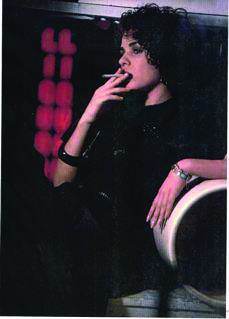
So it was Billy at an all-male sex club called Heaven that woke you to a non-punishing God?
Billy would die three weeks later but I never forgot that story. In all the years I’ve been a teacher and in all the places I’ve studied—that was a peak. Never was the understanding of God transmitted to me as powerfully as with Billy in that moment: “Ignore the story and see the soul, and remember to love, you’ll never regret it.” We’re all ultimately here to learn what love is. Our work is simply to love the soul within each person that is constantly changing and transforming. And we should never stand in judgment of any being whether it’s Danny the Wonder Pony or Violet or the two suited men, me, or him—we’re all God. Even though I didn’t fully grasp what Billy was conveying at the time—that everything is God—this would become the root of my teaching and the theme of everything I do.
Wow. Great story. You also discovered yoga in New York.
I studied a bit with David and Sharon at Jivamukti Yoga, but since I spent so much time with them during the day I mostly practiced at Integral Yoga. The first five years of my doing yoga was purely physical, not spiritual. It did make me feel better and manage anxiety. I was naturally good at it so it gave me confidence. I also gradually quit doing drugs and drinking.
What prompted you to move to California?
One day I was stoned in Central Park listening to Led Zeppelin’s song “Going To California” and the seed was planted. As an East Coaster, California seemed this mythological alternative and progressive place. That line from the song “There’s a girl out there with love in her eyes and flowers in her hair”—that spoke to me, although it didn’t occur to me until later that they were singing about San Francisco and not Los Angeles.
Can you describe the LA yoga scene versus New York’s?
I remember the first time I drove into the YogaWorks studio on Montana. It was like the demarcation moment. I felt so out of place with my big, bushy messy hair, thick black eyeliner, big armpit hair, and New York combat boots. Everyone there was groomed and wore sexy skintight Lycra and I could tell they weren’t wearing underwear underneath, which was kind of sexy. I was so unprepared for the LA yoga scene with my big T-shirts and sweatpants that got tangled up.
I remember seeing [YogaWorks founder] Maty Ezraty holding court with her braids and teal eyes. It was just a very different world. I started doing so much yoga, though I didn’t have the money to afford it. I volunteered, making calls and stuffing envelopes in exchange for classes. Then Maty offered me a paid receptionist job behind the desk and encouraged me to do my first teacher’s training in 1994.
You started in the yoga profession just as the industry was exiting obscurity.
It was the precipice of a cultural phenomenon that we’ve come to know now. People from the gyms were coming to yoga—rock stars, actors, moms and pops. I just hit the crest of that wave. It blew my body wide open—I was high. My endorphins kicked in, and I was getting stronger and seeing progress in my physical practice. With the release of tension my life just got better and healthier and happier.
As a teacher I remember my first class had 10 people and within a matter of few short months the classes went to 56. I know the number because the room could only hold 56 people. Every single class sold out and there’d be a line to the parking lot. And it wasn’t because I was the teacher but because I was teaching a style of yoga that would soon become known as Vinyasa Flow. It was hot, sweaty, and intense and there weren’t a lot of people teaching it back then. I worked my ass off to become a good teacher and took five teacher trainings back to back. Unfortunately, for a young and insecure teacher there was a tendency to put flash before substance—to make the classes more intense rather than intelligent. For years this was the mecca to my own personal madness. Before I became a more skilled teacher, I had catalyzed a lot of inappropriate sequencing that moved across the country. I’ve spent a couple decades trying to undo things I once helped support.
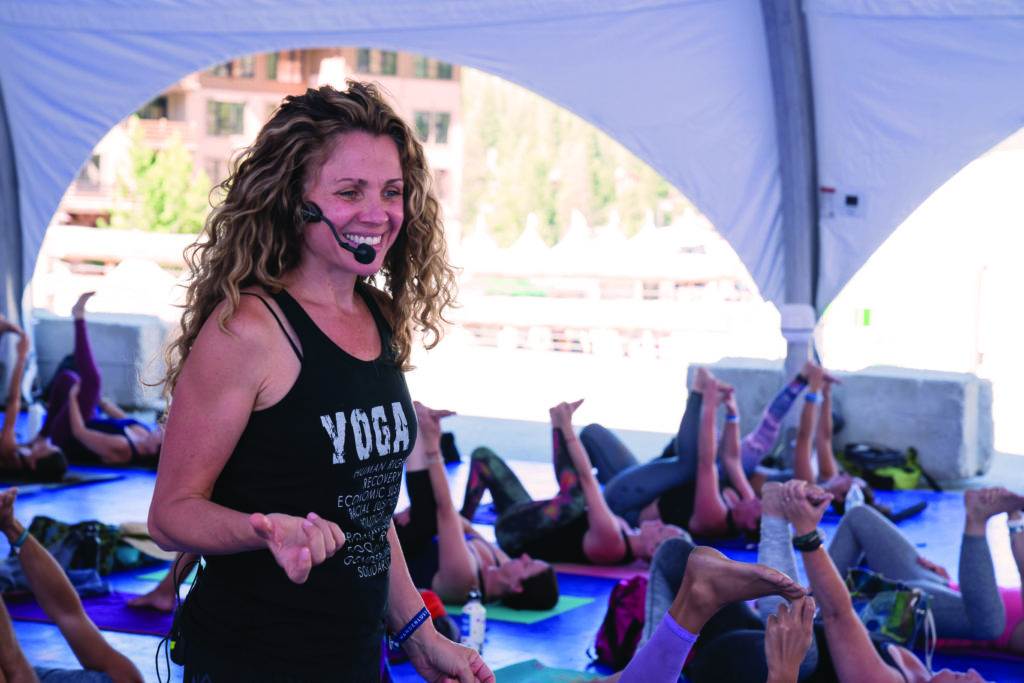
What qualities are needed to be an effective yoga teacher?
It depends on what kind of teacher you want to be. If you’re interested in being a straight asana teacher then learning anatomy, appropriate sequencing, and foundation building are going to be critical. To bring spirituality you still must have form and stability, but you have to be willing to share a certain amount of your own vulnerability and be committed to a strong philosophy and find language that is heart-centered and accessible.
My best teaching comes when I keep my ego in check and make sure I am in service—not only to God but to the authentic health, wellness, and healing of the students. I can’t worry whether the students in the room like me personally. As Maty once told me, “No one will trust you with their soul if they don’t trust you with their body.” So learning how to become an informed, intelligent teacher is probably the most important thing a teacher can do initially.
When you studied with Maty at YogaWorks, it was an independent studio. Now it’s a big corporation and Maty is no longer running it. Has the profession lost its soul?
Good question and one I think about a lot. Back in 1994 when Vinyasa Flow and Power Yoga were becoming popular, I imagined a table of yogis like Patricia Walden, Tim Miller, and Richard Freeman and these teachers who were mine at that time, teaching systems of yoga like Iyengar and Ashtanga. I imagine them sitting around rolling their eyes, saying, “What the hell is this Vinyasa bullshit? What is this Power Yoga crap?” Yet Vinyasa Yoga and Power Yoga had a massive influence on mainstream yogis today. So whenever I think about myself and Shiva Rea and Baron Baptiste and all the other teachers who became popular in the nineties and the 2000s, I picture us sitting around the table saying, “What the hell is this crap they’re doing, jumping into handstands in their short-shorts on Instagram? This isn’t yoga.” And I laugh because yoga is this creative thing that is always evolving and growing and meeting the times.
I’ve always looked at yoga as being a creative healing art—key word art—which is a subjective and creative expression. When an individual grows and evolves and changes, so does their art. Yoga too grows, evolves, and changes. The moment I say, “Here’s what your yoga should look like,” I’m imposing my creative interpretation on something that has its own evolutionary force, and that’s the last thing I should do. I have to trust that yoga is its own art. Eventually, like everything, a mirror always gets held up to reflect back to each person what their intentions are and the ways in which they can fine-tune those intentions so they move away from ego towards authenticity.
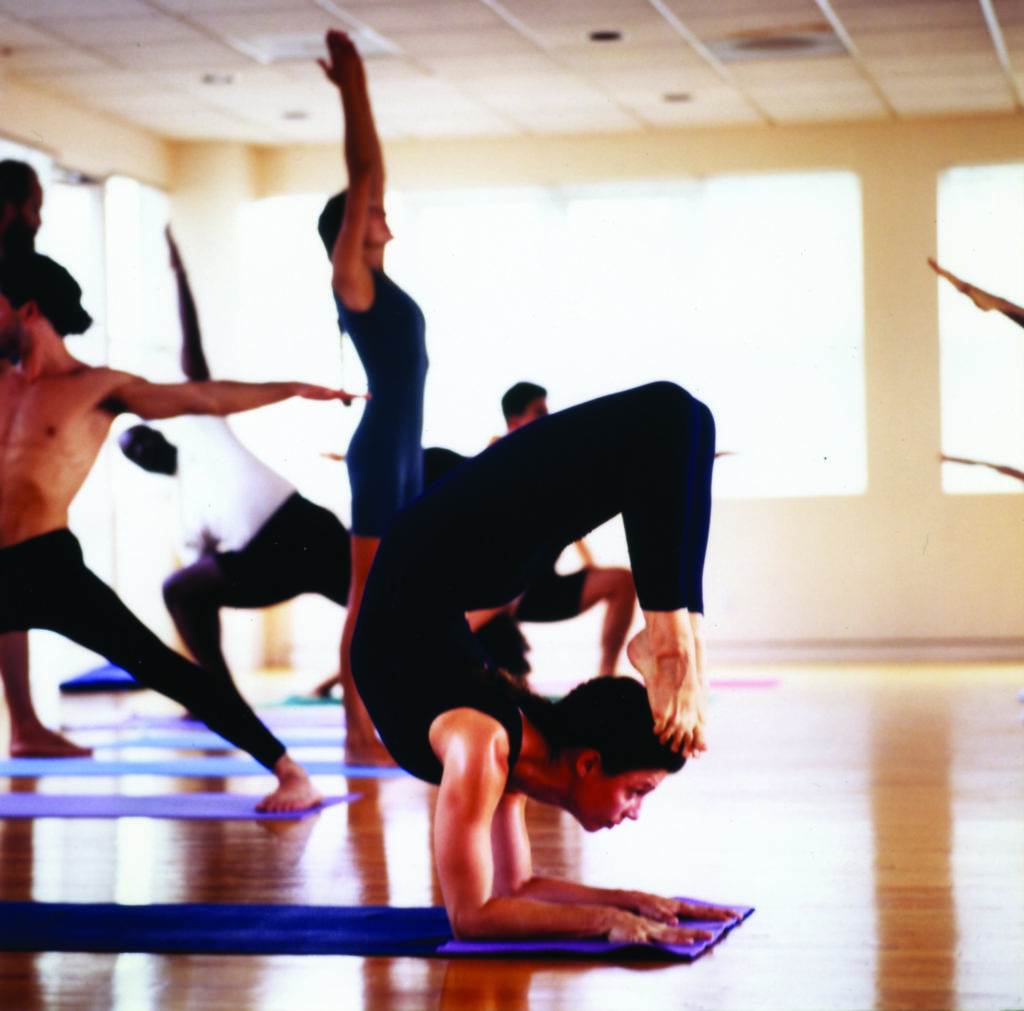
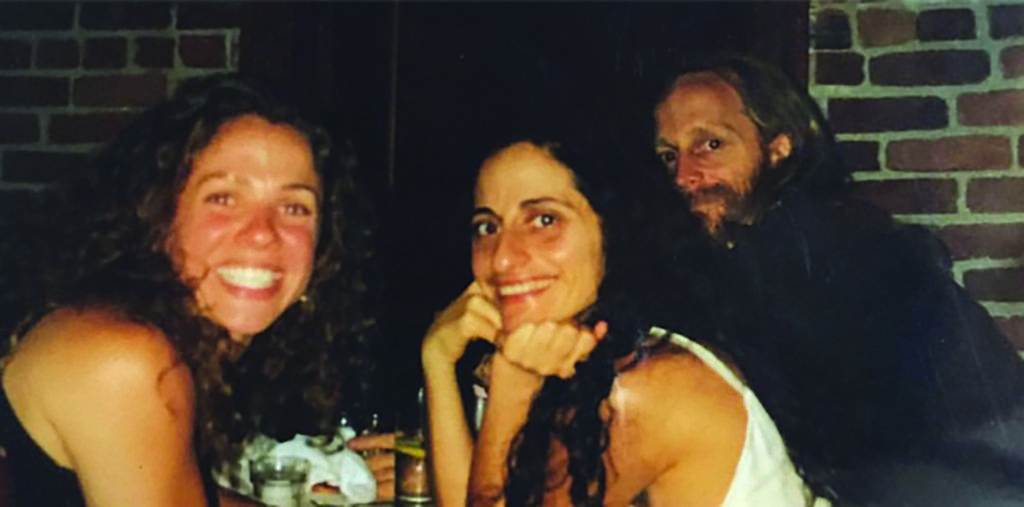
Because you’ve become this rock star teacher, I imagine there’s so much projection onto you. What are the temptations, and how do you avoid tripping out?
The projections are quite remarkable, and it’s my spiritual work not to feed students’ transference. Fortunately I’ve been in therapy since I was 18, and when I started getting successful as a yoga teacher I started noticing the projections and seductions. Like if I don’t feel good about myself one day, I can book a class and have 10, 20, 100 people telling me I’m fabulous. That’s an easy way to bypass my own humanity, but I want to be a yoga student and I don’t want my ego to be the measure of my worth. In therapy every week, I’m working with someone to bring attention to this stuff. The onus is on me not to identify with it. Also I come from an environment in New Jersey where if I bought my own hype, there would be someone smacking me in the head, saying, “Are you out of your fucking mind? Who do you think you are?” I would take that very seriously.
Do you have advice to spiritual seekers and yoga teachers who struggle with abundance? Many are conflicted because they inherently believe money is the root of all evil.
I was raised in a hard-working family in a blue-collar kind of town, so I know the value of a dollar. I also know the value of my energy so to me one equals the other. If I’ve got this much energy it’s worth this much money. That’s going to make it sustainable and I never had an issue about the exchange. From the beginning, I started teaching yoga and treated it like a career. I showed up on time, stayed late. I learned names. I never called in sick if I didn’t have to. I never moved my classes around, and made sure I was consistent. That’s a huge reason why I became successful.
I do remember when it jumped to a different level. Back in the nineties I was working 12 classes and 12 privates a week. I worked my ass off as a single woman trying to save and put money away. Then around 1998 I got a billionaire client who wanted to work with me five days a week. I said I just didn’t have the bandwidth on to my schedule and he said, “Seane, name your price.” And I said, “It’s not about that, it’s a time thing.” He said, “I’m an incredibly rich man. Just name your price.” And he said, “I can also take no for an answer”—meaning that if I said no one more time he would be fine with that. I remember sitting there for a moment and thinking What would it take for me to add one more client to my schedule? So I named what I thought was a ridiculous price at that time and he didn’t even blink. It was done. I drove home and was like, “Holy fuck! Holy fuck! I just pulled in crazy abundance into my life.” This meant I could reduce some clients and go down to a more sustainable three classes a day.
Then I remembered that abundance is energy and that you have to give out abundance; otherwise, the flow of energy stops. This motivated me to go work for Children of the Night, an organization that housed, educated, and supported rehabilitated children who were in the system because of sex trafficking. My intention for being of service was really naïve. I wasn’t being altruistic; I just didn’t want to stop the flow of abundance.
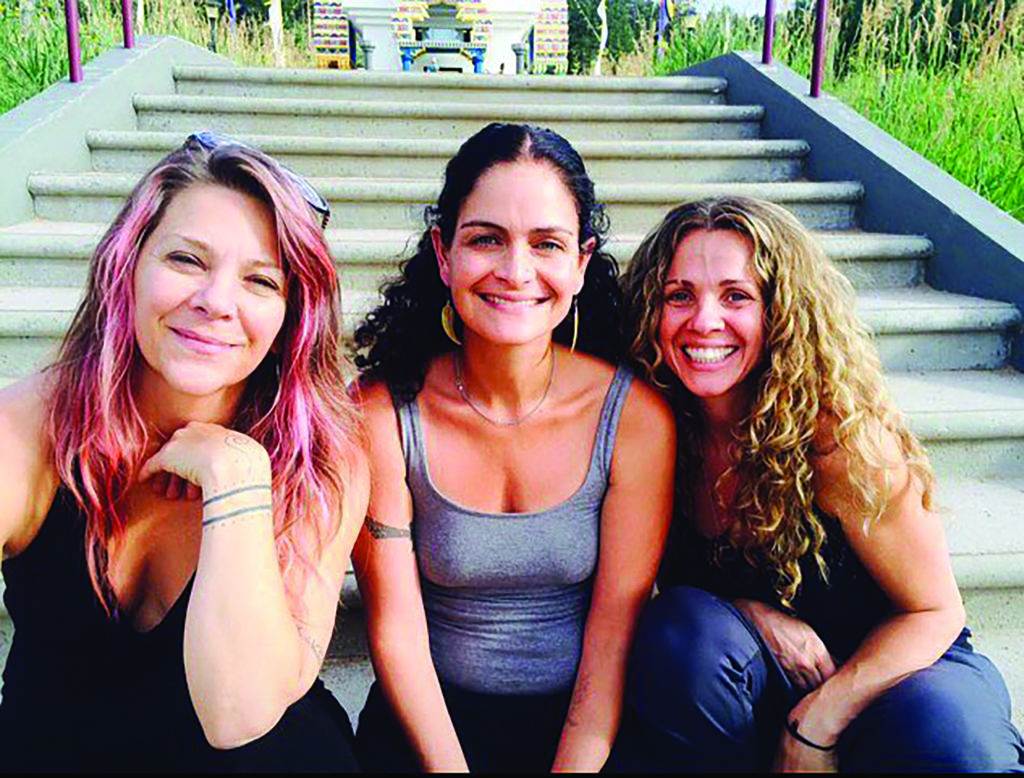
Wait. Let me stop you for a second. You’re all about service but did you just say your original attraction to serve was only to keep the good vibes flowing?
Oh yeah, totally. It wasn’t because “Oh, I want to help people.” Not consciously. I had just gotten this client and wanted to give back so that the abundance didn’t stop—very cavalier.
It’s rare to hear such honesty.
I mean I liked the idea of service and thought teaching these kids yoga would be blissful, but they were awful and mean and disrespectful and rude. They wouldn’t listen to anything I said and I was triggered. After an hour I rolled up my mat and bolted out. All this rage came up. I was angry at the kids and angry at the system. Then I got really emotional and what happened next catalyzed a big change within me. I sat in my car and just started crying. The insight I got was that I didn’t just meet 15 traumatized young people. I met 15 examples of my own disowned, traumatized self. I thought I had healed this in me, but it seemed I had only gotten clever at bypassing.
When I actually met and saw that part of myself in other people, my first reaction was to reject and judge it. It made me wonder: How long had I been running? Then I knew I had to go back for a very different reason—I had to understand why these kids terrified me. At first I thought it was their anger and then I realized it was their grief—and that I’d never dealt with my own grief. Suddenly, I wasn’t there to fix or heal them. Yes, I was there to offer some tools but equally to learn from what they had to teach me. This became the foundation for the work I would later do teaching people leadership skills and understanding the mind-body connection, internalized trauma, ancestral trauma. It changed everything about the direction of my life and career.
Ten years ago you started the big nonprofit Off The Mat Into the World with Suzanne Sterling and Hala Khouri. Can you tell the story?
I used to teach a workshop called Spiritual Activism as a first attempt to bridge the gap between yoga and purpose and leadership. At the same time I was the Global Yoga Ambassador for Youth AIDS, and I was able to quickly raise $300,000 since my students trusted me. They believed I would have vetted things thoroughly. Wow, I thought. There’s a lot of positive power with this platform. However, the ability to just raise money was discouraging because while I was getting people fired up, I knew I didn’t have the resources to follow through. There was no curriculum, no community support, and no structure to ensure long-term change. I knew the enthusiasm generated during the weekend workshop would fade by Wednesday. I needed an organization to aggregate the energy of the yoga community, their prayers, their time, their money, their efforts, their values.
I met these two women from the Engage Network who said, “We’ve been paying attention to you. We have this grassroots building model for social change. You’ve got an audience; we’re looking for social champions. We’ll give you the seed money to develop a curriculum—are you interested?” I was like, “Fuck yeah!” But I knew I couldn’t do it on my own. So I looked to create a horizontal feminine model of leadership—of shared power. I reached out to Hala Khouri—a wonderful leader doing social justice work—and my old friend Suzanne Sterling, with whom I’d been working for years around consensus training and ritual.
The three of us got together to form Off the Mat Into the World with a focus on leadership building. Our goal was to help bridge the gap between yoga, transformational work, social justice, and action by training small circles of leaders. We would help leaders build these inside-out skills by looking at the social justice conversation through a trauma-informed lens. These yogis would then go back to their communities and aggregate the local energy to do their projects such as animal rights, environmental justice, politics—it doesn’t matter.
Can you explain the Global Seva Challenge?
This is a popular motivational fundraising program within Off The Mat that was inspired by a trip to India I made with Youth AIDS. They took me there to visit the organizations they supported and it was a life changer. All this emotional stuff inevitably came up visiting these impoverished areas. It opened my eyes, and I wanted people to have a way to earn a similar experience. So we would pick a country and vet organizations that were already doing great work there and find out what projects needed funding and we’d commit to funding those. Then we would challenge local yoga communities to find creative ways to raise 20,000 yoga dollars. If they did they could come with me for two weeks to that country and see where their money was being spent and have the full emotional experience on the ground. So far we’ve been to eight countries and invested in 23 different sustainable projects by raising close to $4 million. It’s been very successful.
How is the organization evolving 10 years on?
We’re studying our limitations and trying to improve. Speaking for myself, my own privilege gets in the way of my own awareness. We’re trying to broaden our faculty on the ground by focusing on quality over quantity. We’re going deeper into communities to better understand the social justice issues as they relate to contemporary policy. We are also creating a program called Leaders At Bridges to help yoga teachers navigate the challenges of the trauma that exists in this political atmosphere. We’re helping teachers learn to take a stand in a yoga class and use that platform to encourage people to vote their values.
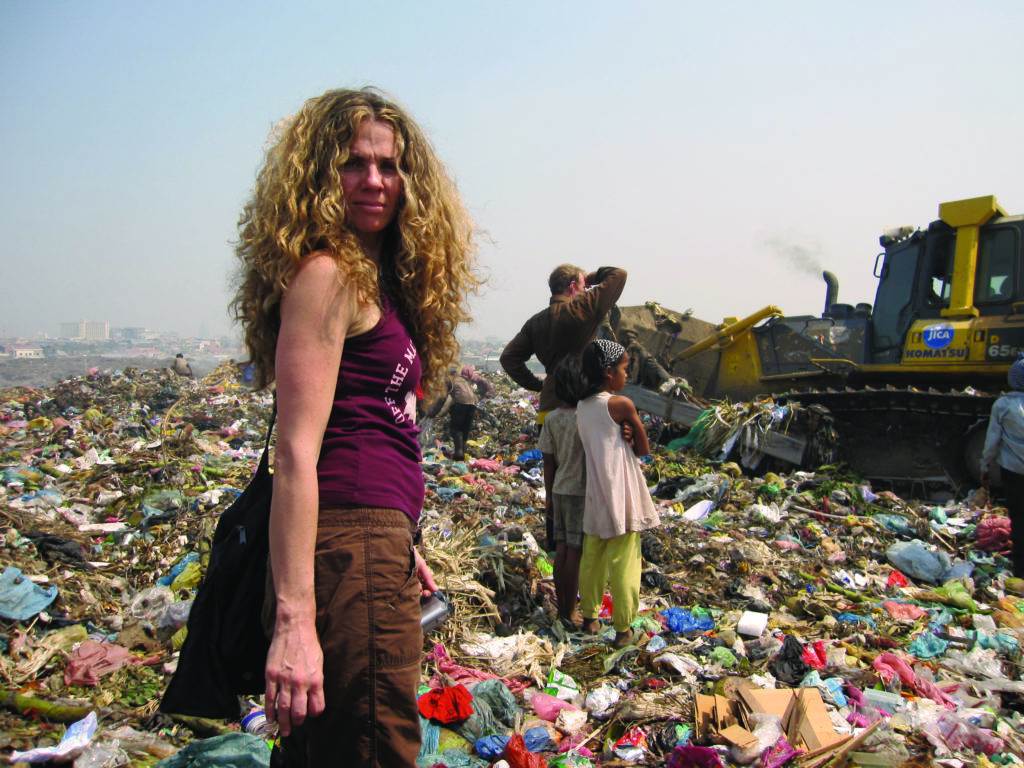
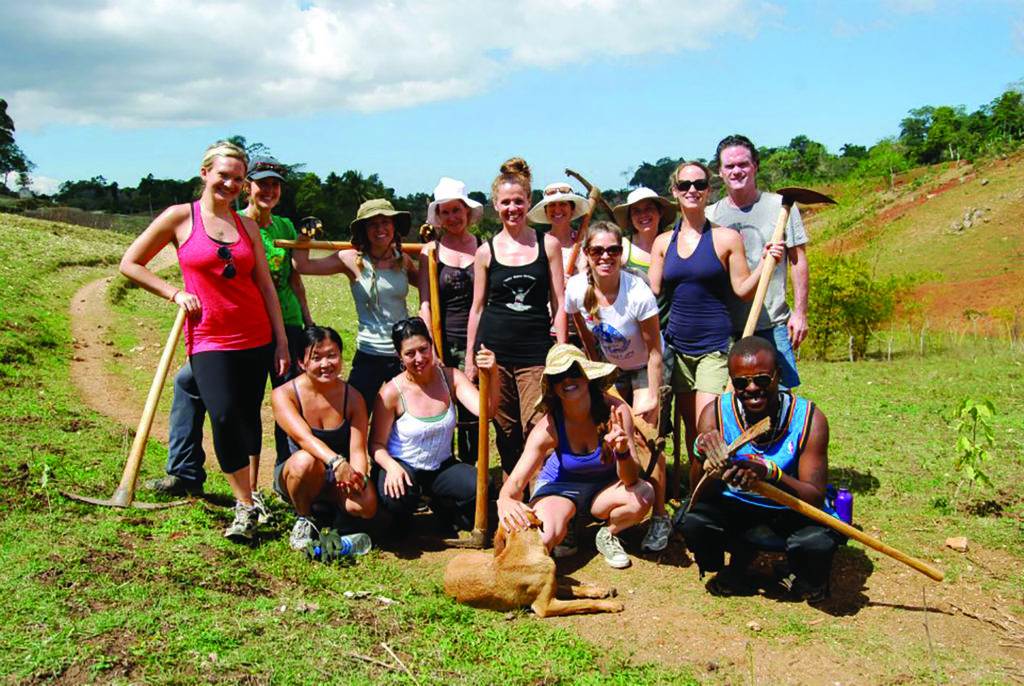
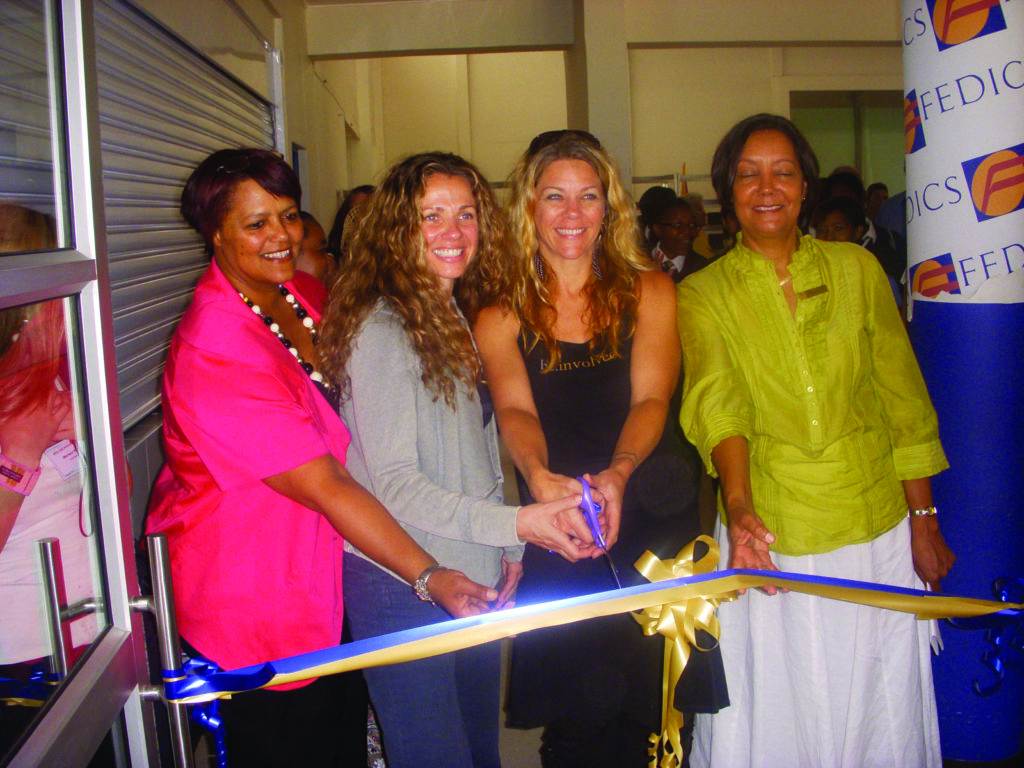
Is it nonpartisan when it comes to yoga and politics? I think there’s a perception that yogis are either apolitical or bleeding heart lefties. What’s your experience?
To me there is no separation between yoga and politics. Anything that affects the happiness, health, and welfare of a human being—the yoga practice needs to be a part of it. I’ve always voted. When you’re dealing with policies that give to some and withhold from others, how can you say politics is not yoga? We created Yoga Votes as a way to start the dialogue within the yoga community—what does it mean to vote your values? Of course we saw there was a lot of diversity in the yoga community. Because Off The Mat is a nonprofit we can illustrate what different candidates stand for, but we must remain neutral and can’t tell people how to vote. We help train teachers how to embrace the diversity of political opinions yet not run away from that conversation because of their own fear.
My personal experience with the political atmosphere is wounded. The yogi in me can’t stand the vitriol. It’s like watching your parents fight—you just want it to end.
To me it’s all very spiritual and what’s happening in the world is very purposeful. To me Donald Trump’s administration has excavated the shadow that exists within all folds and has deeply unearthed historical ancestral traumas. As privileged white people, we’re outraged that there’s a sudden dialogue about xenophobia and religious racism since we thought that was at rest, but no—it’s alive and fiery.
Without tools, it’s not excavation it’s just reaction—hate meeting hate. The vitriol is so aggressive because people are hurt. It needs to be dealt with if any real change is going to happen. My belief in yoga is that you can’t change what you won’t see. For my part I have to recognize the ways in which my privilege has made me complicit in the oppression of others, and then change it. If that’s the gift of this administration then it’s a massive service.
There’s that saying—if you spot it, you got it. So if I’m hating something within Donald Trump, I have to be willing to look and say, “Does that live within me?” Have there been instances of bias and discrimination? Have I lied? Have I manipulated? The answer to all those questions is yes—because I am human.
You’re guarded about your private life but you’ve been together with your partner, Al [Corley], for many years. What can you share about your relationship that might be taken as advice?
Al and I have been together for 17 years but we’re not married. He has three children that I managed to also parent for all these years. We’ve a very deep, loving, very supportive relationship. Al is a very confident man. Because of that he has never, even in the subtlest way, needed to diminish my self esteem in order to feel good about himself. So I walk around the world knowing that I am very loved. I can be as big and loud and expressive as I want and always know that he has my back, with no interest in changing my personality or my commitment to social service. Since I’m not home often, I can be emotionally unavailable for the next 24 hours after I get off a plane. I turn inwards to balance out all the energy I’ve given. Al takes care of me in my moments of quiet and retreat and never puts any demands on me because he’s got his own big world.
What does he do?
He’s in the entertainment business, where he has his own life. When I met Al he was a single parent with full custody, and it was very important for him to be 100% devoted to his children. He needed someone who wasn’t going to get in the way of that. I fell in love with him because of that even though it interfered with our time together. I wouldn’t have wanted to be with him if he hadn’t been completely devoted to his children, being both mother and father to them. In turn he is very protective of me and of our private life, which is why I don’t talk about it very often.
He values what I stand for and encourages me to be in my purpose. Al is without a doubt the man behind the woman. There’s just a lot of mutual love between us, and it’s always been a very easy relationship from the very beginning. I wouldn’t be as successful as I am had he not been so grounded. I’m like this helium balloon flying out in the world with this long string and Al is rooted with his hand on that string. I could fly out as far as I want but he will make sure I don’t go soaring into space.
The kids must be grown up if you’ve been together for 17 years.
They’re all grown up and they’re great. The youngest is 25. We have a wonderful family.
Any final words for Common Ground readers?
Let love lead. I am inspired when I see ordinary people taking a stand for what they believe, stepping into leadership and creating change. I believe in the grassroots movement happening within the yoga community. My final words to readers—this has nothing to do with the size or shape of your body. This has nothing to do with your gender, your sexuality, your race, your age, or your abilities. Creating social change has everything to do with your willingness to open your heart and step out of your comfort zone, to find your voice and speak your truth. If we can come together with all this energy, peace will inevitably result. It’s possible if we let love lead.
Rob Sidon is publisher and editor in chief of Common Ground.